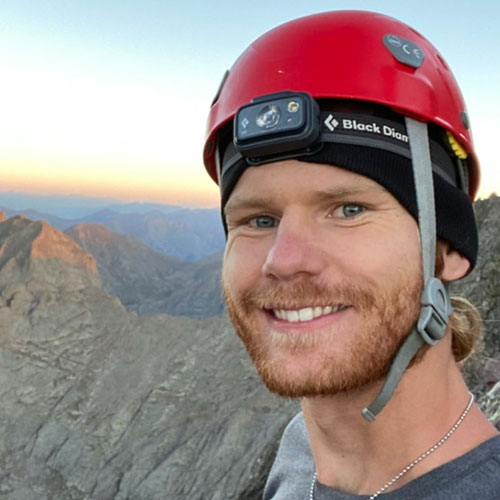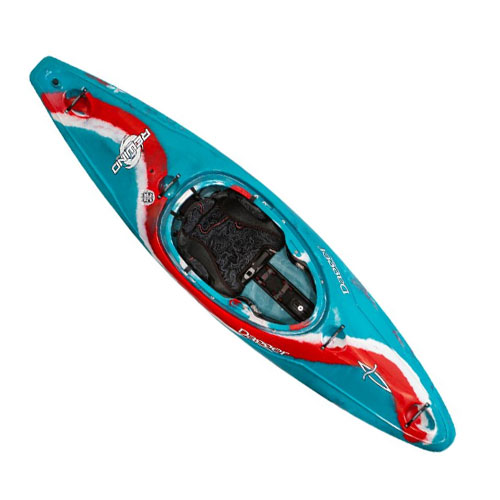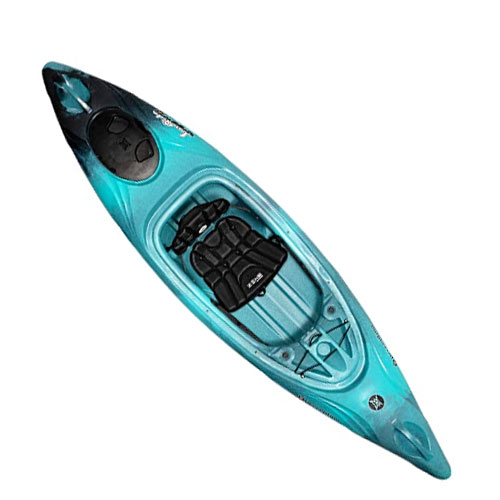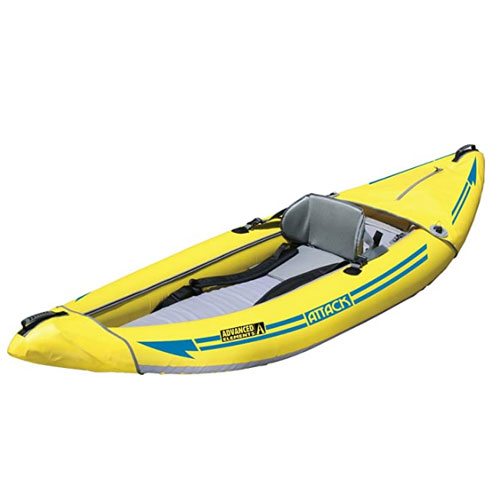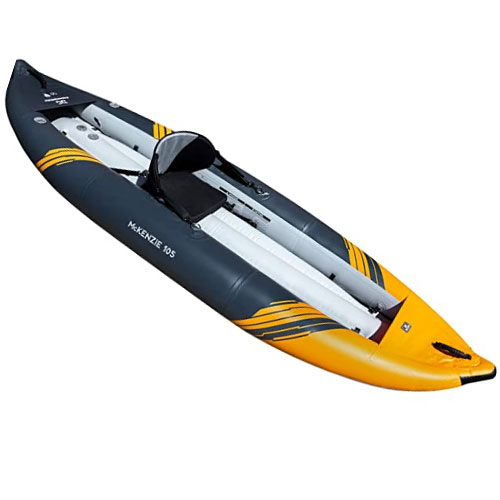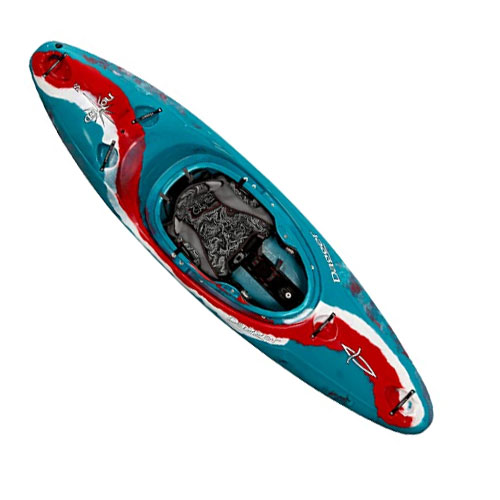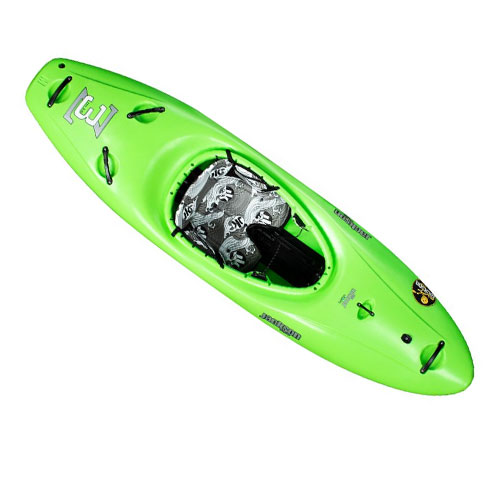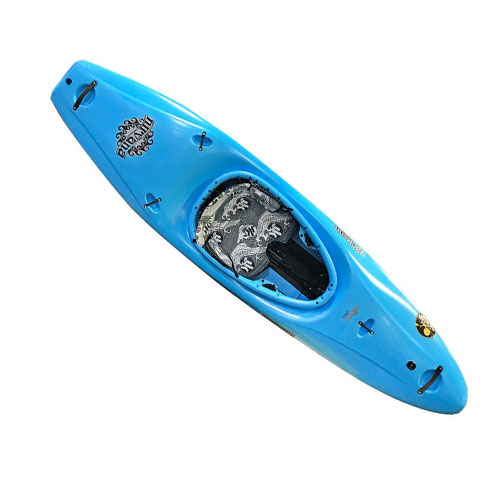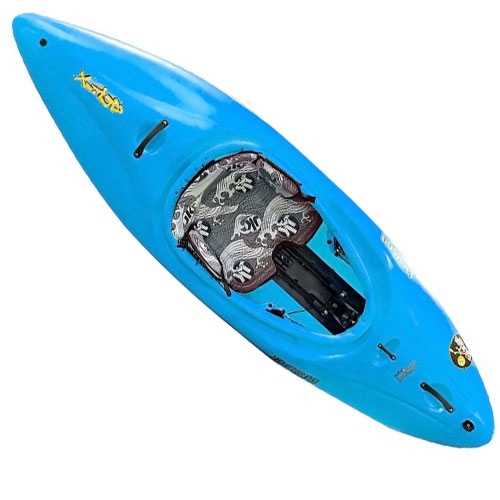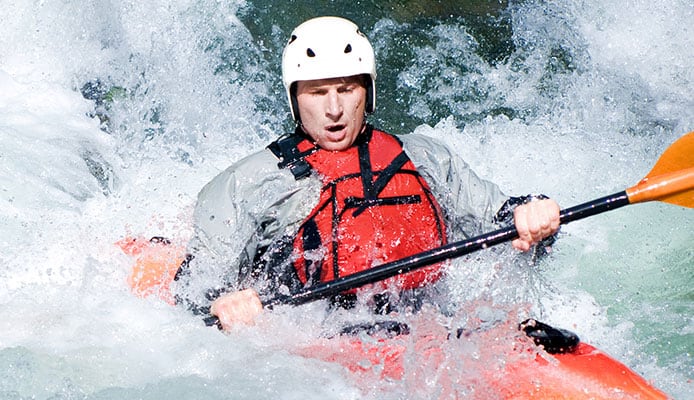
-
1.
-
2.
-
3.
-
4.
If you enjoy an adrenaline rush and want more excitement on the water, whitewater kayaking is perfect for you. By requiring you to focus more and overcome challenges that come with fast-paced rapids, this type of kayaking truly takes the experience to a higher level.
Due to the intensity of this activity, a standard kayak isn’t the best choice here. If you want to stay safe and have fun, you’ll need a whitewater kayak that is up to the task – balanced, responsive, and highly maneuverable. Whether you’re an experienced whitewater kayaker or just getting started, the best whitewater kayaks from our list will allow you to confidently tackle even demanding rapids.
OUR TOP PICK
Dagger Rewind Whitewater Kayak
- What Makes This Kayak For Whitewater Stand Out
- Excellent handling even in very difficult rapids
- Plenty of bow and stern volume makes the ride playful
- Leg lifters and foot braces for comfort while riding
- Thigh braces provide additional control when turning
- Safety wall makes getting in and out of the kayak easier
Best For: Fast Rapids (up to Class V)
Kayak Type: Sit-In
Length: 9 feet 4 inches
Width: 27 inches
Weight: 47 pounds
Material: Polyethylene
Maximum Capacity: 260 pounds
EDITORS CHOICE
Perception Joyride 10 Whitewater Kayak
- What Makes This Kayak For Whitewater Stand Out
- Versatile design for both whitewater and calm water
- 10-foot hull fits both adults and kids equally well
- Selfie Slot for securing your phone and taking photos
- Large dry storage hatch with a hinged lid at the stern
- Zone Deluxe breathable seat with leg lifting feature
Best For: All-Around Kayaking
Kayak Type: Sit-In
Length: 10 feet
Width: 29.5 inches
Weight: 50 pounds
Material: Polyethylene
Maximum Capacity: 275 pounds
BEST VALUE
Advanced Elements Attack Whitewater Kayak
- What Makes This Kayak For Whitewater Stand Out
- Puncture-resistant reinforced PVC Tarpaulin hull
- Thigh straps provide additional kayak control
- Independent air bladders for additional safety
- Molded rubber handles make carrying convenient
- 12-inch rise on both ends for tackling waves easily
Best For: Portability
Kayak Type: Inflatable
Length: 9 feet 6 inches
Width: 35 inches
Weight: 34 pounds
Material: PVC, Tarpaulin
Maximum Capacity: 225 pounds
Aquaglide McKenzie 105 Whitewater Kayak
- What Makes This Kayak For Whitewater Stand Out
- Strong Duratex hull with leak-proof welded seams
- Four mesh drains easily eliminate water from the cockpit
- Core 2 seat with a multi-position adjustable backrest
- Built-in Posi-Track fin improves kayak tracking
- EvoBeam floor construction makes the kayak rigid
Best For: Comfort
Kayak Type: Inflatable
Length: 10.2 feet
Width: 33.5 inches
Weight: 24 pounds
Material: Duratex
Maximum Capacity: 300 pounds
- What Makes This Kayak For Whitewater Stand Out
- High-volume design for improved whitewater performance
- Large rocker makes the kayak incredibly responsive
- Tank-style molded seat provides both comfort and control
- Backband easily adjusts with a ratchet system
- Contour Ergo kayak outfitting for additional strength and security
Best For: Small Kayakers
Kayak Type: Sit-In
Length: 8 feet 2 inches
Width: 25.75 inches
Weight: 43.5 pounds
Material: Polyethylene
Maximum Capacity: 170 pounds
- What Makes This Kayak For Whitewater Stand Out
- Performance-shaped hull easily kayaks whitewater
- Low-volume bow construction makes it responsive
- Ergonomic cockpit shape raises the comfort level
- Adjustable seat allows finding the perfect position
- Cup holder in the middle fits a Nalgene water bottle
Best For: Learning and Practicing
Kayak Type: Sit-In
Length: 6 feet 10 inches
Width: 24.5 inches
Weight: 31 pounds
Material: Linear Polyethylene
- What Makes This Kayak For Whitewater Stand Out
- Streamlined hull provides speed when racing
- Long profile helps keep the kayak afloat in whitewater
- Uni-shock bulkhead significantly softens the impacts
- Screwed-in GoPro mounts for recording your ride
- Webbing loops make carrying the kayak easy
Best For: Racing
Kayak Type: Sit-In
Length: 8 feet 11 inches (medium), 9 feet 4 inches (large)
Width: 26.5 inches (medium), 27.5 inches (large)
Weight: 44.5 pounds (medium), 51 pounds (large)
Material: Reinforced Composite
Maximum Capacity: 210 pounds (medium), 270 pounds (large)
- What Makes This Kayak For Whitewater Stand Out
- Slicey stern makes it the best creeking kayak available
- Planed hull for an ideal mix of handling and stability
- U-Channel hull tracks improve safety on the water
- Lightweight construction makes transportation easier
- Built-in mount for a standard GoPro action camera
Best For: Performing Tricks
Kayak Type: Sit-In
Length: 7 feet 4 inches (small), 7 feet 9 inches (medium), 8 feet 1 inch (large)
Width: 27 inches (large)
Weight: 42 pounds (large)
Material: Reinforced Composite
Maximum Capacity: 250 pounds (large)
How To Choose A Whitewater Kayak – Buying Guide
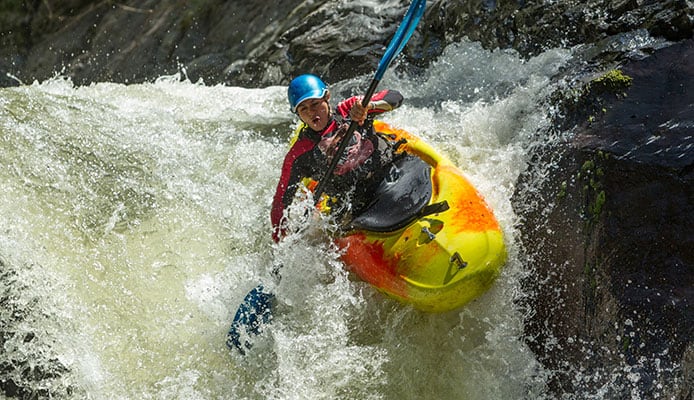
Hull Shape
With the advancements in materials and technology, the highest-performing kayaks are no longer skinny and long like they were a decade ago. Nowadays, kayaks are becoming shorter and rounded, shaped more like a log. According to multiple tests (both live and simulated), the stability and performance of log-shaped kayaks are far superior to traditional ones.
That being said, you can still choose between a planing hull (flat) and a displacement hull (round). A planing hull creates more resistance in aggressive waters, so it’s often found on the best river runner kayaks. On the other hand, a displacement hull is better for tracking and tipping from edge to edge, but offers less stability and maneuverability.
Speed
You might think that the speed isn’t an issue when talking about the best whitewater kayaking models, since the water is fast anyway. However, even though the kayak doesn’t need to further add speed, it should be able to handle that speed. Because of this, a heavy and slow kayak is harder to control through shifting rapids, which might slow you down.
Rapid Class
To better display the properties of a river or a rapid, experts agreed on an internationally-recognized level system that ranges from level I to level VI. Non-moving waters like lakes are classified as class A waters, while all others have their place on the scale.
For example, a class I rapid is fairly slow and easy to navigate, while class V and VI rapids are fast and very difficult to handle. When shopping for the best kayaks for rapids, be sure to check whether the model has been greenlighted for the rapid class you want to tackle.
Safety Features
Due to the nature of the sport, you should expect the kayak to capsize sometimes and you should be ready when it happens. Unfortunately, there isn’t yet a kayak that can guarantee that it won’t capsize in the dynamic whitewater environment.
The best thing you can do to improve safety is to respect all the recommendations and precautions given by your instructor and always wear a life jacket for kayaking. Also, if you’re not a very experienced paddler, we recommend choosing the most excellent whitewater kayaks for beginners, since those will focus on putting safety first and performance second.
It’s good to know your kayaking safety tips to make sure you are well prepared for your journey. This includes aspects such as kayak self-rescue to ensure that you can get out of any tricky situation you may find yourself in.
Comfort
In theory, the more comfortable you feel in your river runner kayak, the more control you will have when tackling the rapids. In reality, this is true only up to a certain point because there is somewhat of a tradeoff between comfort and control. A more comfortable kayak often means added size and weight, which may be counterproductive on whitewater.
Because of this, we think it’s best to always consult the white water kayak size guide and get a model that is ideally sized for your body frame. After you’ve picked among the different types of whitewater kayaks, you can focus on other aspects like cockpit shape, the type of seat you’ll be getting, and whether the boat has foot braces.
Related Post: Whitewater Kayaking Gear
FAQs
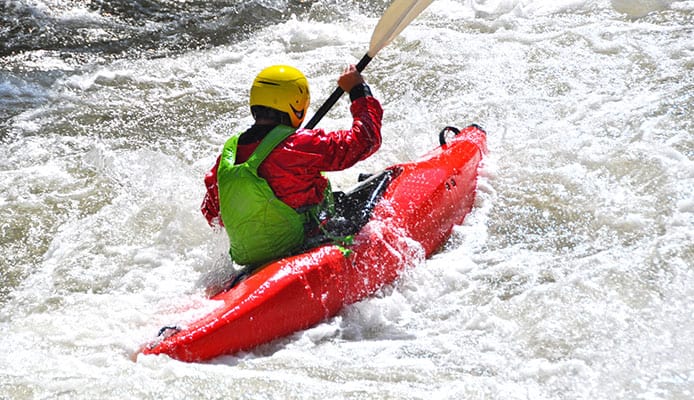
Q: How to Roll a Whitewater Kayak?
Rolling a kayak designed for whitewater requires a bit more skill than rolling a standard kayak. Due to the environmental factors that you can’t control, you should expect to sometimes swim when rolling it.
This being said, the easiest technique is the C2C roll which is very similar to the move required to flip yourself back up if you capsize. Alternatively, you can sometimes use the sweep roll or the hand roll. Be sure to ask your instructor to show you the technique and practice it so you can react properly on the water.
Q: Why Do People Kayak Whitewater?
Even though the adrenaline rush is the main reason for kayaking on whitewater, it isn’t the only thing that draws people to the activity. In addition to the excitement it gives you, it also allows you to see incredible scenery from a unique perspective and fully enjoy nature.
Q: How to Surf With A Whitewater Kayak?
Owing to their unique design, surfing whitewater kayaks is fairly easy. If you wish to practice front surfing, creek kayaks will practically do this on their own without much skill required. On the other hand, side surfing in the best river runner kayak may require some practice. Either way, we suggest that you get an instructor if you’re serious about kayak surfing.
Globo Surf Overview
While it’s not for the faint of heart, whitewater kayaking can be one of the most amazing experiences you’ll ever have on the water. If you’re a little bored with the usual water sports, this is something you definitely need to try. We hope that our reviews and guide helped you find a whitewater kayak that will give you the adrenaline rush you seek.
More Kayak Reviews:
- Recreational Kayak
- Fishing Kayak Under 1000
- Tandem Fishing Kayak
- Beginner Kayak
- Kayak Seat
- Kayak For Lake
- Fishing Canoe
- Ocean Kayak
- Folding Kayak
- Kayak Anchor


